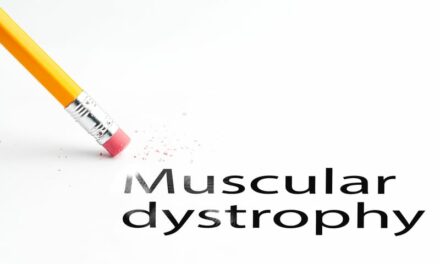Scientists from Sanford Burnham Prebys have uncovered a molecular signaling pathway involving Stat3 and Fam3a proteins that regulates how muscle stem cells decide whether to self-renew or differentiate.
This insight could lead to muscle-boosting therapeutics for muscular dystrophies or age-related muscle decline, they suggest, in a study published in Nature Communications.
“Muscle stem cells can ‘burn out’ trying to regenerate tissue during the natural aging process or due to chronic muscle disease,” says Alessandra Sacco, PhD, senior author of the paper and associate professor in the Development, Aging and Regeneration Program at Sanford Burnham Prebys.
“We believe we have found promising drug targets that direct muscle stem cells to ‘make the right decision’ and stimulate muscle repair, potentially helping muscle tissue regeneration and maintaining tissue function in chronic conditions such as muscular dystrophy and aging,” Sacco adds, in a media release from Sanford Burnham Prebys Medical Discovery Institute.
Muscle wasting occurs as part of the natural aging process, called sarcopenia, or due to genetic diseases such as muscular dystrophy.
Muscle stem cells select between two fates over a person’s lifetime: Either differentiate to become adult muscle cells or self-renew to replenish the stem cell population. Accumulating evidence shows that mitochondrial respiration (cellular breathing) is a key switch that drives muscle stem cells to differentiate, an energy-intensive process, instead of self-renew.
In the study, the scientists used mouse models to demonstrate that Stat3 promotes mitochondrial respiration. Because Stat3 regulates many cellular processes, the scientists combed through genes expressed during muscle growth to find additional proteins regulated by Stat3 that might serve as more specific targets.
These efforts uncovered the protein Fam3a. Further work conducted, including generating a mouse model and cell lines that lack Fam3a, demonstrated that the protein is required for muscle stem cell differentiation and muscle growth.
The researchers also showed that Fam3a is secreted by muscle cells during muscle repair, and treatment with the protein restored mitochondrial respiration and stem cell differentiation in muscle stem cells that lacked Stat3 — all demonstrating the integral role of Fam3a in determining muscle stem cells’ fate, the release explains.
“As the number of people over the age of 65 rises due to the aging of the baby-boomer generation, it is important to not only extend life span but also health span — the years we can remain healthy and active,” states David Sala, PhD, the first author of the paper and a postdoctoral researcher in the Sacco laboratory.
“The ability to boost and maintain muscle tissue function can help more people live an active and independent life. The results of our research can also find applications for muscle wasting disorders such as muscular dystrophy.”
The scientists are already conducting preclinical studies to validate Fam3a as a therapeutic target. They also hope their findings could apply to stem cells that differentiate to create other tissues, which could help treat other degenerative tissue diseases, the release concludes.
[Source(s): Sanford Burnham Prebys Medical Discovery Institute, Science Daily]





